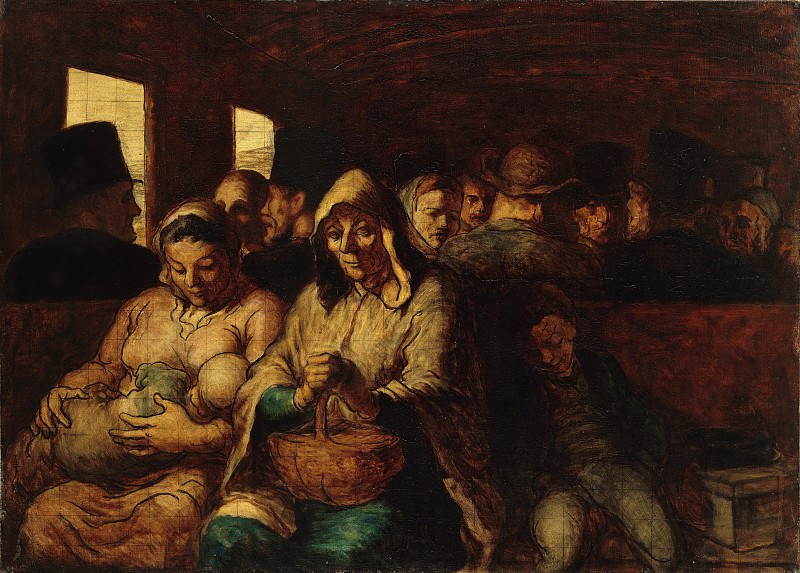The Third class Carriage Honore Daumier (1808-1879)
Honore Daumier – The Third class Carriage
Edit attribution
Image taken from other album: gallerix.org/s/776165577/N/220533/
Download full size: 3764×2695 px (4,6 Mb)
Painter: Honore Daumier
Painted in the nineteenth century, the painting addresses a phenomenon of the time: the railroad. It was strange and new then, and Daumier could not avoid the subject. Known for his satirical caricatures for his time, his paintings came out carrying important themes. This painting also shows a diverse crowd swaying in time with the movements of the train. The oil on canvas perfectly captures the stingy, dark colors with which the artist worked.
Description of Honore Daumier’s painting "Third Class Carriage".
Painted in the nineteenth century, the painting addresses a phenomenon of the time: the railroad. It was strange and new then, and Daumier could not avoid the subject. Known for his satirical caricatures for his time, his paintings came out carrying important themes. This painting also shows a diverse crowd swaying in time with the movements of the train. The oil on canvas perfectly captures the stingy, dark colors with which the artist worked. He wanted to show people riding in a third-class carriage, a place where there is no comfort to speak of.
The light from the window barely illuminates their tired, poverty-stricken faces. The carriage is packed to capacity, and there would be no room for one more person. The characters depicted here are used to putting up with the blows of fate, and their faces show submission to all the possible difficulties of their difficult life. The foreground depicts a woman for whom it is perfectly normal to breastfeed her baby in front of strangers. She simply does not care. Beside the old woman sits a boy, who from fatigue has forgotten a heavy sleep.
The low ceilings almost crush the passengers, making them wonder how they will get off public transport. There is only one smile on the entire canvas, and it is not a full smile, but only a shadow of it. It runs across the face of a slumbering boy, showing that the world of children has no power over any difficulties. And it also says that his disarming naivety is able to resist both suffering and poverty. The artist painted this smile with special attention.
Кому понравилось
Пожалуйста, подождите
На эту операцию может потребоваться несколько секунд.
Информация появится в новом окне,
если открытие новых окон не запрещено в настройках вашего браузера.
You need to login
Для работы с коллекциями – пожалуйста, войдите в аккаунт (open in new window).


















You cannot comment Why?